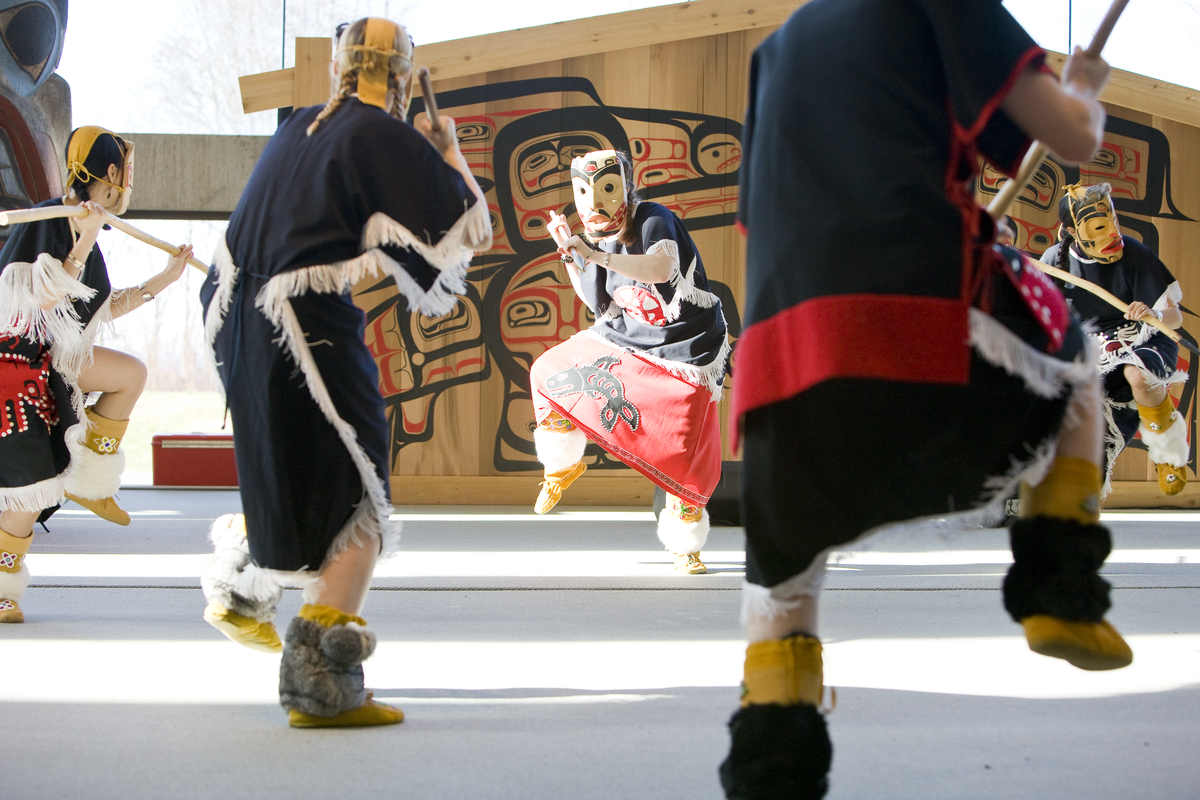
Traditional Indigenous dance performance at the Museum of Anthropology (courtesy Destination BC).
In early March, Vancouver City Councilor Christine Boyle submitted a motion for the City to implement the United Nations Declaration on the Rights of Indigenous Peoples (UNDRIP). If successful, leadership from the Musqueam, Squamish and Tsleil-Waututh First Nations – the three First Nations whose traditional territories are now called Vancouver – will gather with City representatives to develop an actionable plan to implement the declaration.
UNDRIP – adopted in 2007 – establishes a universal framework of minimum standards for the survival, dignity and wellbeing of Indigenous peoples around the world, and applies existing human rights standards and fundamental freedoms to specific situations concerning Indigenous peoples. The City of Vancouver has already made significant long-term commitments as a City of Reconciliation, and taken several steps to advance reconciliation with local First Nations – including land acknowledgement that the city lies on the unceded territory of the Musqueam, Squamish and Tsleil-Waututh peoples. While the governments of Canada and British Columbia have endorsed UNDRIP (in 2019, BC also passed the Declaration on the Rights of Indigenous Peoples), Council Boyle argues that municipal governments, including the City of Vancouver, must also fully adopt and implement these principles. The motion is currently under consideration.
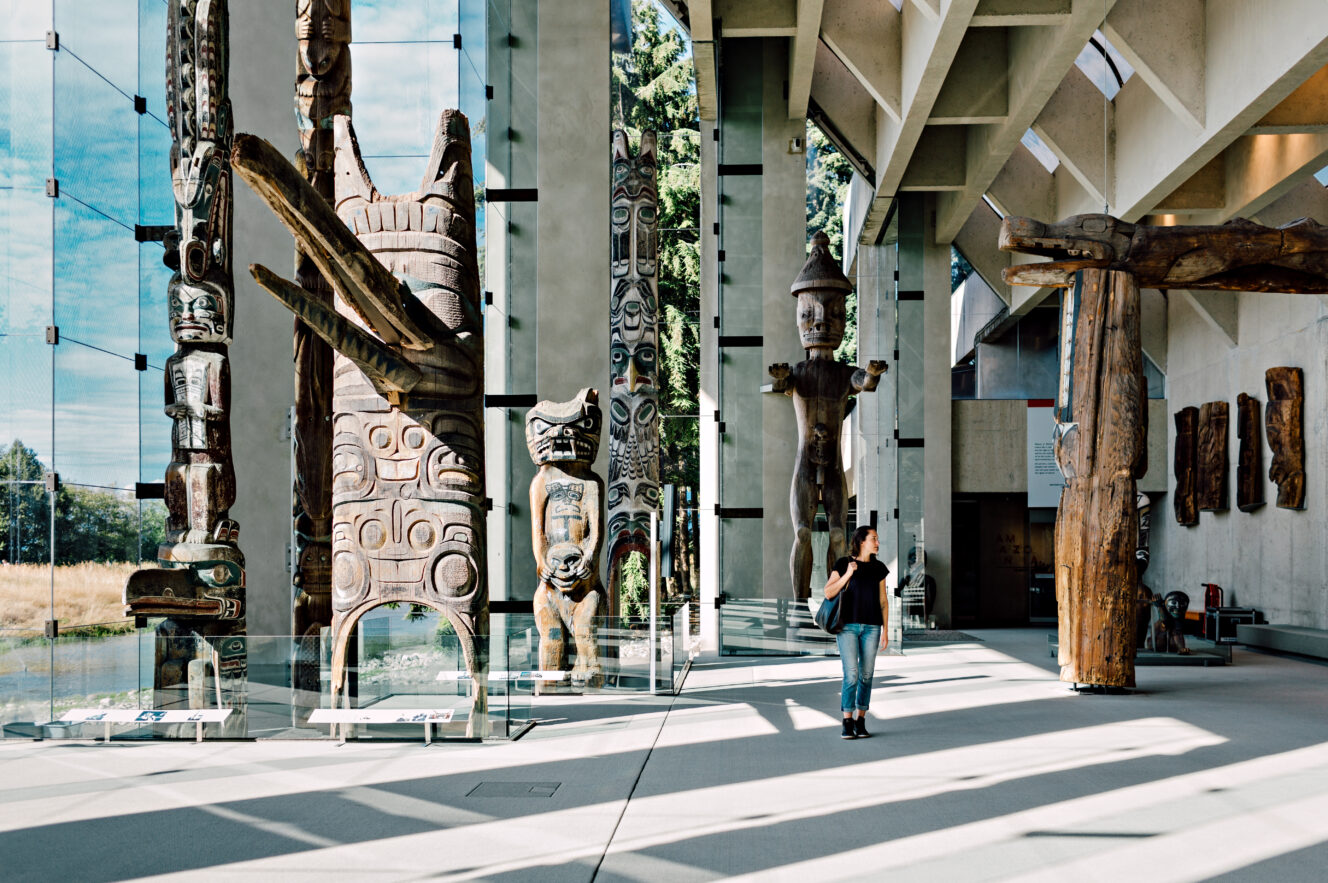
Museum of Anthropology (courtesy Tanya Goehring).
In the meantime, locals and visitors can become better acquainted with – and, in turn, develop new understanding and respect for – Indigenous history and culture at several attractions in and around Vancouver. One of the most well-known is the Museum of Anthropology at the University of British Columbia, where 7,100 archaeological and ethnographic objects paint a cultural picture of BC’s First Nations, including contemporary artwork and totem poles by renowned Haida artist Bill Reid. As soon as they step into the commanding Great Hall, visitors will find themselves immersed in artwork and historical objects, including sculptures, bentwood boxes, feast dishes and canoes, along with house posts and carved figures.
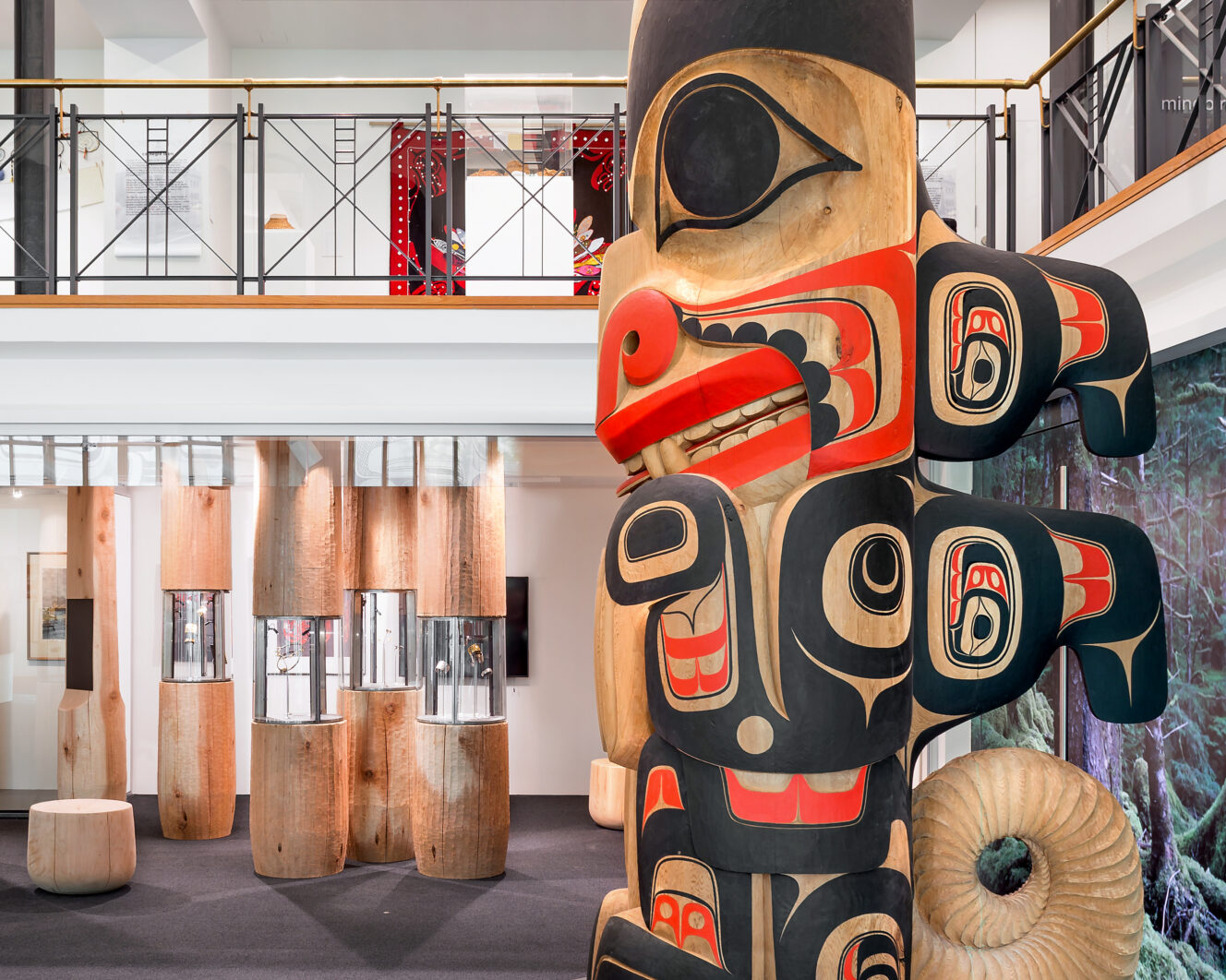
Bill Reid Gallery (courtesy Sama Jim Canzian).
If you like Bill Reid’s artwork, you won’t want to miss the Bill Reid Gallery of Northwest Coast Art in downtown Vancouver. A master goldsmith, carver, sculptor, writer and spokesman, Bill Reid – born to a Haida mother and American father – was known for monumental artwork that infused Haida traditions with a modern aesthetic, and for building bridges between Indigenous and non-Indigenous peoples. Today, the gallery is one of few dedicated to contemporary Indigenous art of the Northwest Coast.
Not many people know that Capilano Suspension Bridge Park in North Vancouver is rooted in Indigenous history – in fact, the name “Capilano” hails from the Squamish Nation word “Kia’palano”, which mean “beautiful river”. Visitors can see the powerful Capilano River for themselves as they traverse the 137-metre suspension bridge to the leafy forest beyond; there’s also a fascinating Kia’palano exhibit alongside North America’s largest collection of privately owned totem poles.
Another collection of exquisite totem poles awaits in Stanley Park, including three red cedar portals at Brockton Point that welcome visitors to the traditional lands of the Coast Salish people. Nearby are nine totem poles that hold distinction as the most visited tourist attraction in BC: they were sent to Vancouver from Vancouver Island’s Alert Bay, Haida Gwaii in the Queen Charlotte Islands, and the BC central coast Rivers Inlet.
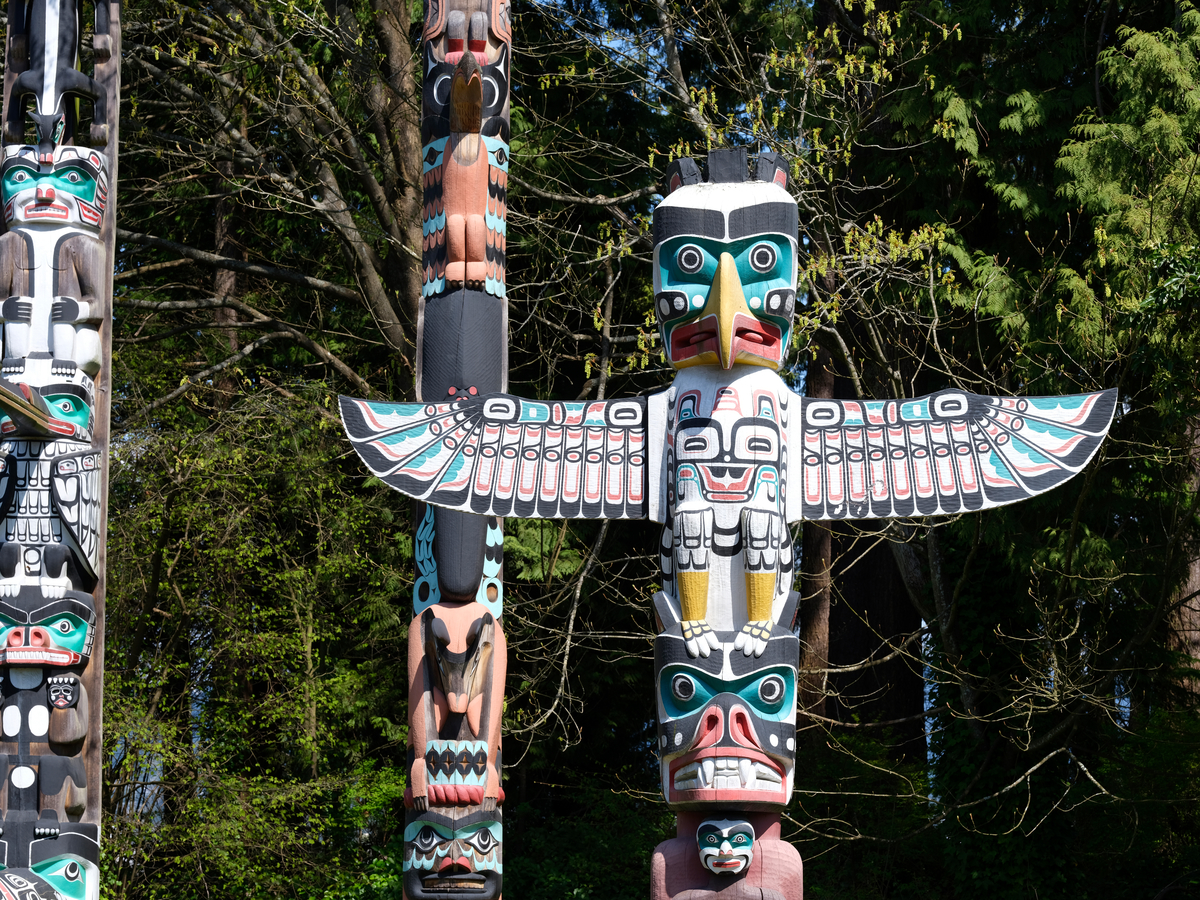
Stanley Park totem poles (courtesy Destination BC).
To enhance your exploration of Stanley Park, join the Talking Trees Tour hosted by Indigenous-owned Talaysay Tours. Guided by a local First Nations cultural ambassador, you’ll learn about local plants that, for thousands of years, were harvested by the Coast Salish people for food, medicine and technology. The guide will also share Indigenous ecological practices, ancient and contemporary history, stories and legends.
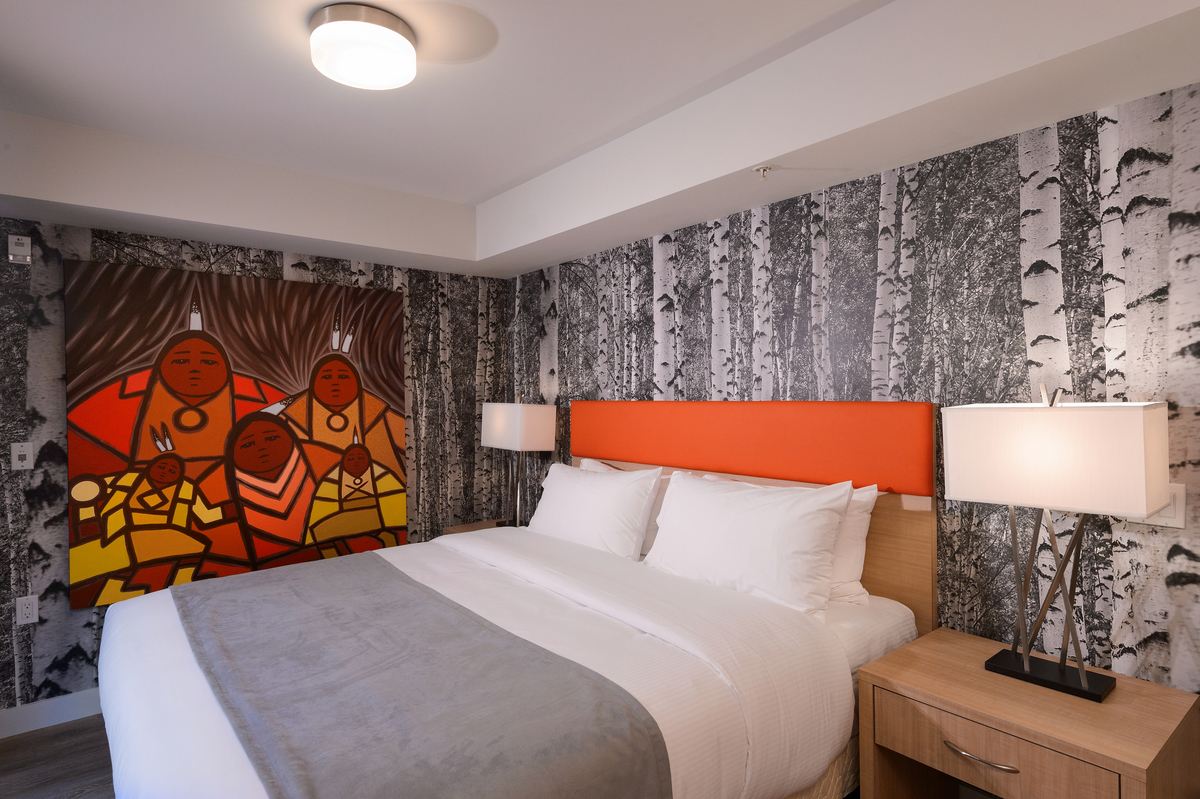
Skwachays Lodge (courtesy Destination BC).
For visitors seeking full immersion in local First Nations culture, book a stay at Skwachays Lodge, Canada’s first Indigenous arts hotel. A social enterprise that funds 24 living and working studios for an artist-in-residence program, the hotel is home to a fair trade gallery on the ground floor that features original paintings, jewelry, pottery, wood carvings and giftware crafted by Indigenous artists. The 18 guest suites were designed by Indigenous artists and local interior designers, and are brought to life by compelling visual stories that weave tales and relay myths. Guests can book a special purification ceremony in the rooftop garden sweat lodge, a domed structure containing heated rocks that cleanse the participant’s heart, soul and spirit. During the ceremony, sacred plants like sage and sweetgrass are burned to purify, or “smudge”, the participant, helping to overcome toxicity and negativity.
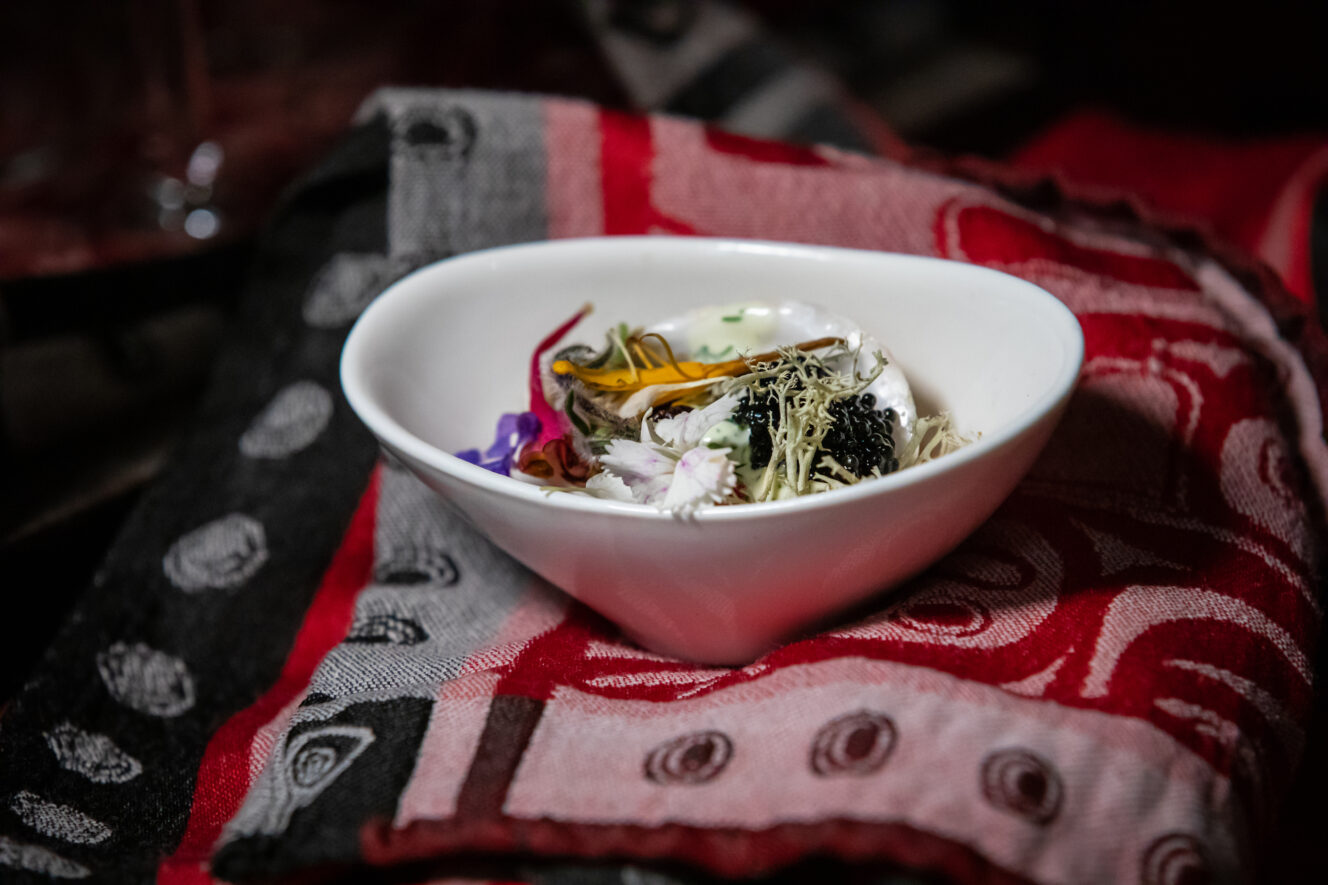
Salmon n’ Bannock (courtesy Vision Photography).
For an authentic First Nations meal, pay a visit to Salmon n’ Bannock, a popular Indigenous-owned restaurant. Here, visitors can indulge in signature bannock (including a gluten-free version for those with dietary restrictions), as well as game sausage, salmon mousse, pemmican and other traditional fare.
Venturing further outside Vancouver, Fort Langley National Historic Site is a great spot for the entire family to learn about Indigenous history in BC. Once part of the trade route for the British Empire, the site was home to a large population of coastal Indigenous people, who traded furs and fish for blankets and other goods. Today, guests can listen to First Nations interpreters telling century-old tales, or plug into an audio tour to learn about the Fort’s history. For the full Fort experience, you can stay overnight in an OTENTik – a cross between an A-frame cabin and prospector tent – with limited availability in 2021.
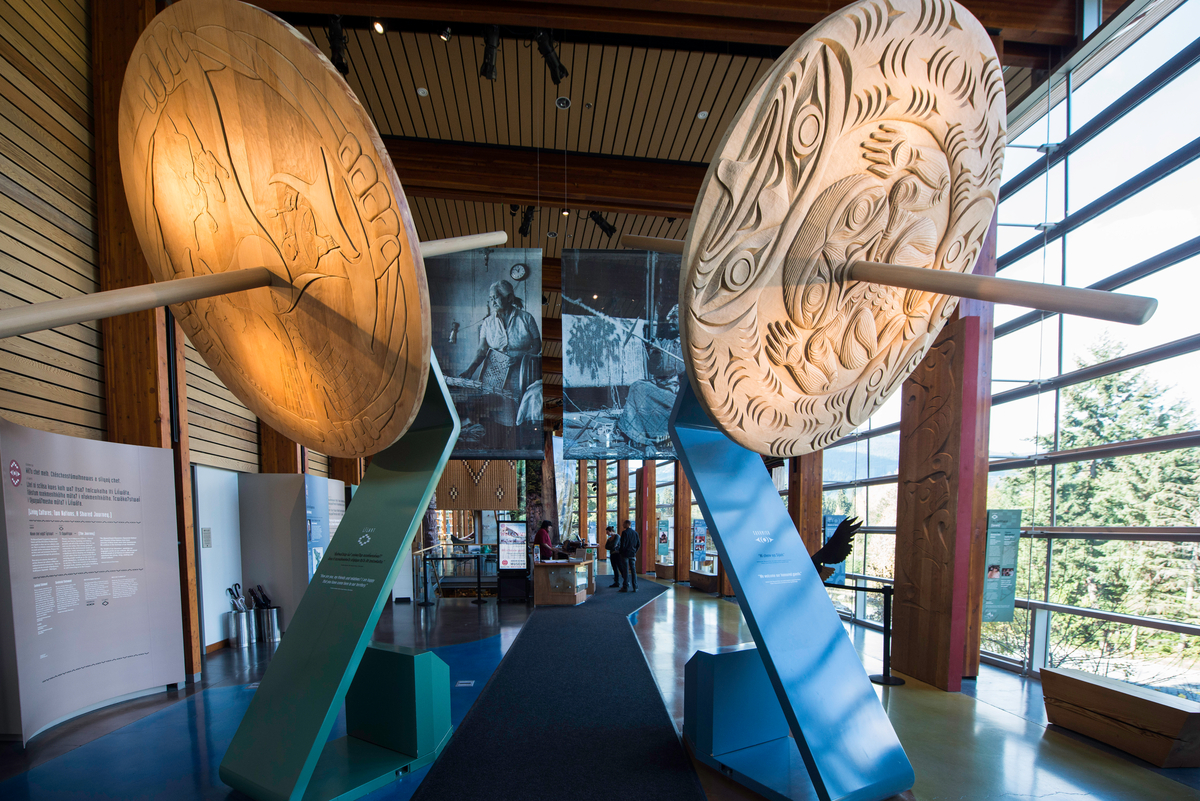
Squamish Lil’wat Cultural Centre (courtesy Destination BC/Indigenous Tourism BC).
Finally, point your car west and head towards Whistler to experience the Sea to Sky Cultural Journey along the spectacular Sea to Sky Highway. Along the route, you’ll see signage in English and local Indigenous languages, as well as kiosks relaying the history of the area and describing the oral history of supernatural beings and myths. In Whistler, ambassadors at the Squamish Lil’wat Cultural Centre greet visitors in English and Squamish language. The aesthetic building is surrounded by untouched forest, and is designed to evoke traditional longhouses of the Squamish people and Istken (earthen pit house) of the Lil’wait people. Inside, guests can explore beautiful cultural artefacts as guides explain the importance of the surrounding mountains, sea and river to Indigenous life and values.
Eager to learn more about Vancouver’s Indigenous peoples? Visit Tourism Vancouver’s website for suggested attractions and venues.












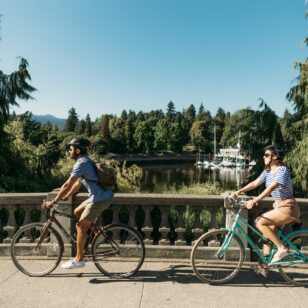

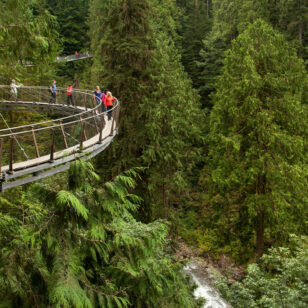
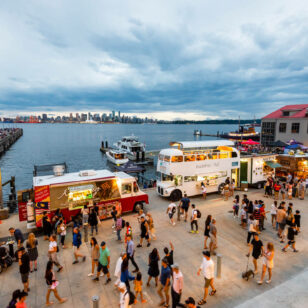
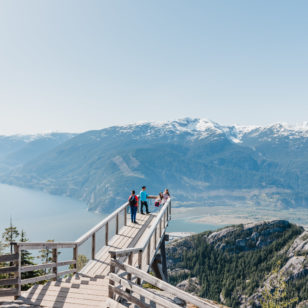
One Response to Immerse Yourself in Indigenous Culture in Vancouver